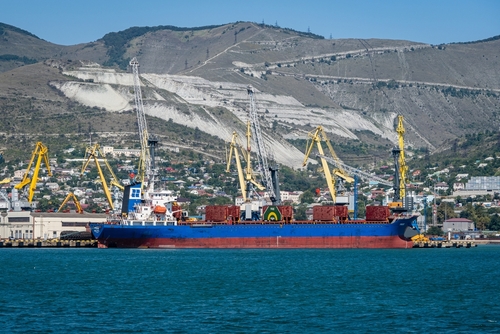
Part 1: How should automobile exports and logistics be? An approach to improving logistics (trade).
Hello, I am Ichiki of Sync Logistics.
In this issue, I will share our company’s philosophy when building logistics services and when logistics problems arise.
■Mountain climbing where members of the climbing party have varying fitness levels
Have you ever gone mountain climbing with a group of people?
Imagine a mix of young, elderly, male, and female climbers, who are each carrying backpacks of varying sizes and weights. Anticipating the wonderful view at the summit, the mood is friendly and congenial, and the climb begins. A man in his 40s enjoys the fresh air as he climbs, a woman in her 30s enjoys talking with her companion, an elementary school student is looking forward to eating lunch at the rest area. There’s also a man in his 70s who’s quite confident in his physical strength but has been gaining weight recently.
The group proceeds with the climb but something unusual happens. You suddenly hear people saying“We have to climb faster before the sun sets,” “My knees hurt,” “I should go slower or else I’ll be short of breath,” “The straps of my backpack are rubbing against my shoulders and they hurt.”
These things may occur because regardless of climbing experience, there are differences in the burdens climbers carry, on their physical condition on that day, and their bodily weight even if they are all climbing the same mountain.
The Theory of Constraints is an effective solution to this kind of situation.
■ An approach that supports the weakest part (person) to raise total productivity
The Theory of Constraints is a theory proposed by Israeli physicist Eliyahu Moshe Goldratt to improve a system’s performance. This theory focuses on the process among all processes with the smallest throughput (the bottleneck), and maximizes the total throughput through the following processes:
1. Identify the constraints in the system.
2. Thoroughly exploit the constraints.
3. Except for the constraints, subordinate everything else.
4. Elevate the constraints’ capabilities.
5. If the constraint has been resolved, go back to step 1 and repeat.
In the mountain climbing example above:
1. Identify the group member with the weakest physical strength.
2. Put that person at the front of the climbing party. (This minimizes stopping to rest.)
3. Other members share in the weakest person’s load by carrying that person’s backpack.
4. Prioritize equipping the weaker members with walking sticks and cold-weather gear.
Repeat these four steps.
■ The fundamentals of problems occuring at logistics sites
Issues similar to these frequently occur at logistics sites. The domestic logistics of used car exports begin with land transportation from the auction site, followed by: warehousing at the export yard, photography, storage, leaving the warehouse, ship booking, export customs clearance, vanning, ship-side go down, and drayage. Each of these processes has many constraints such as storage space, manpower, ship space, and the number of tractor heads.
Even though the people on-site are dedicated in doing their duties, various problems arise all at once “the moment the total throughput limit is exceeded.”
A large burden is placed on customs specialists and on-site workers because when a chronic shortage of ship space occurs (like what is happening now), ships cannot be loaded, thus a shortage of storage space arises. There is also an increased number of orders for vessel space that suddenly opens up. Because various problems arise from a single bottleneck, it is difficult to know where to start, and things come to a halt. These are the fundamentals of problems occuring at logistics sites throughout Japan.
In the next issue, I will share an example of a process that improves logistics.
Thank you for your time.






